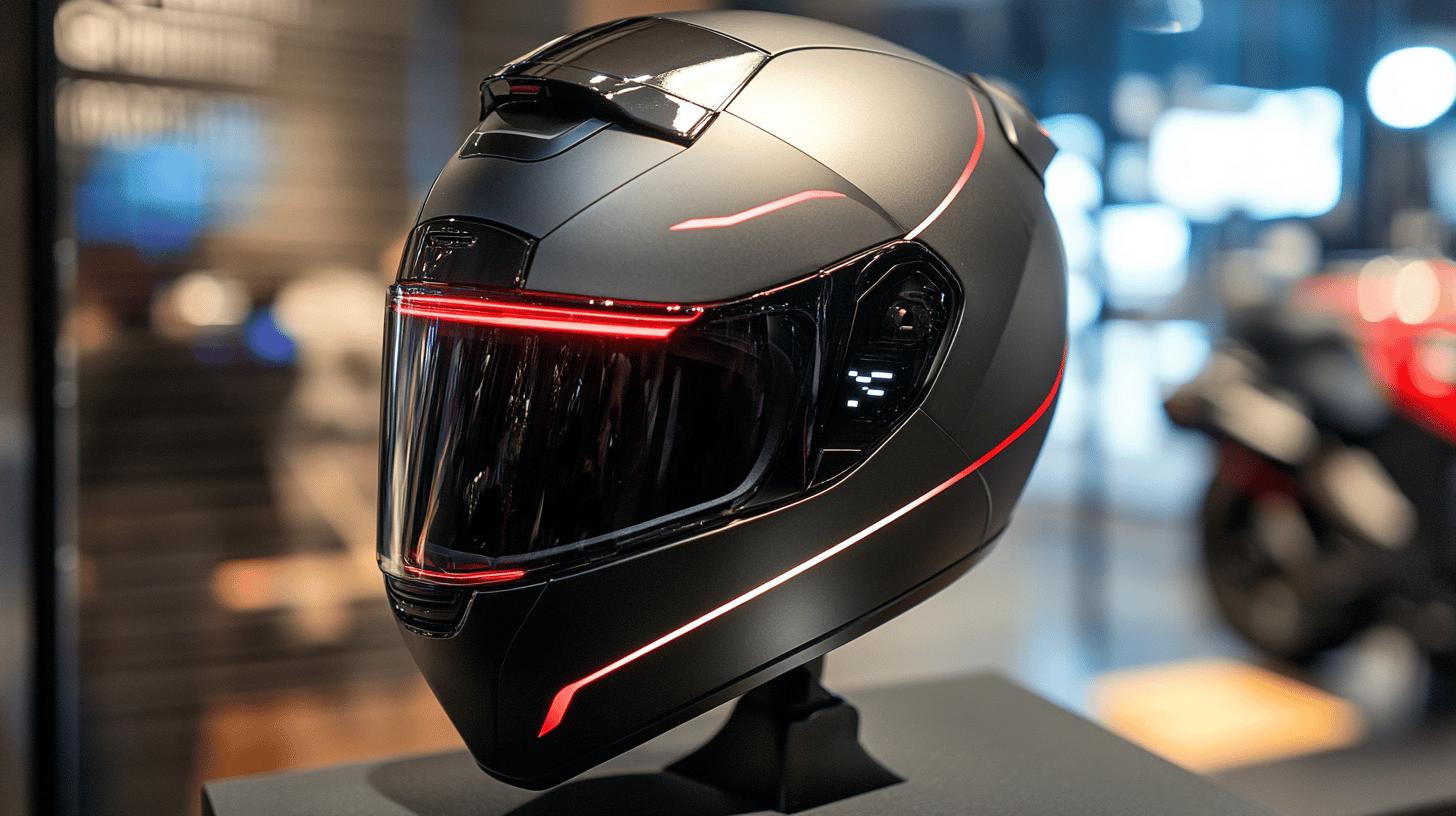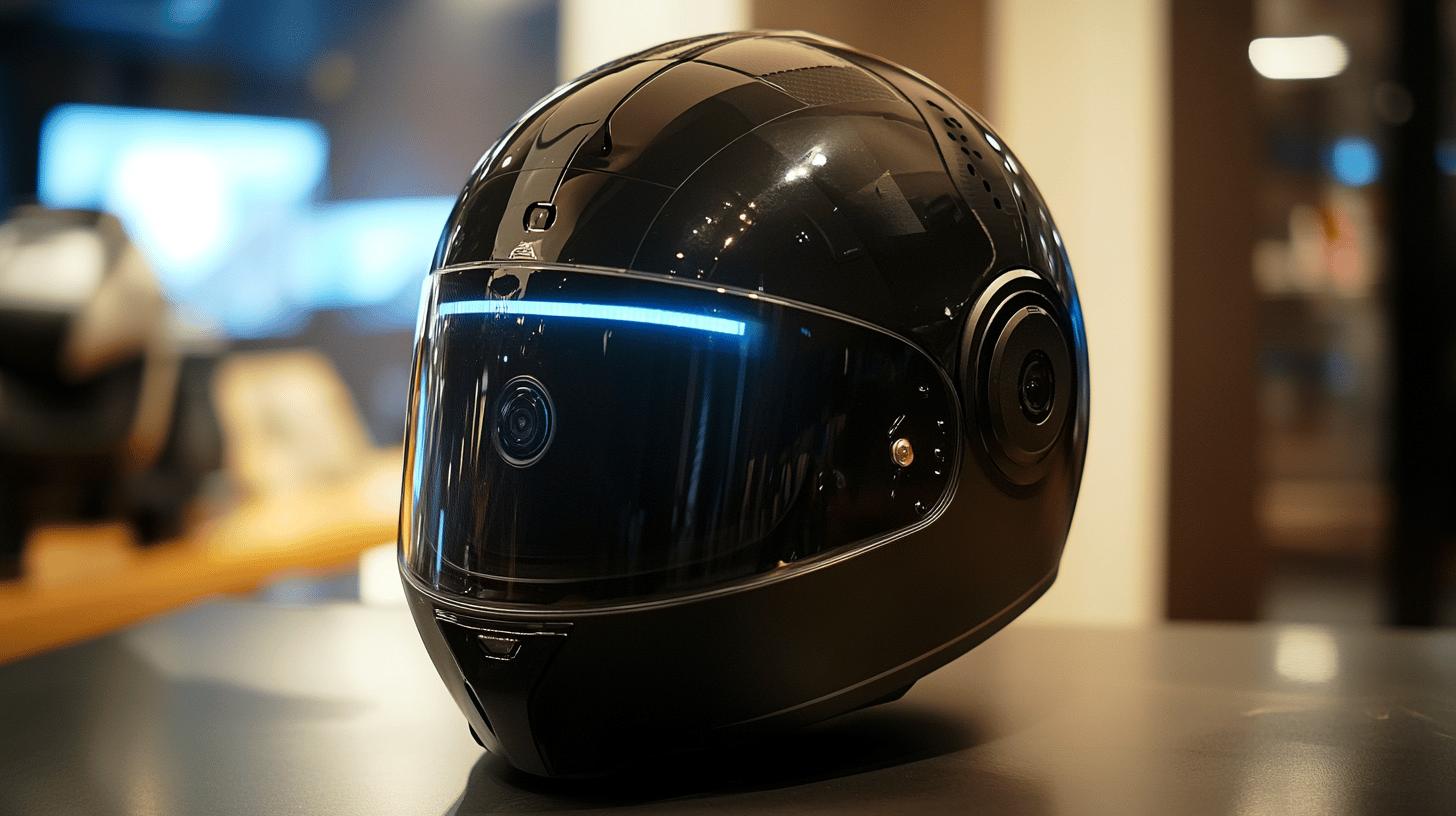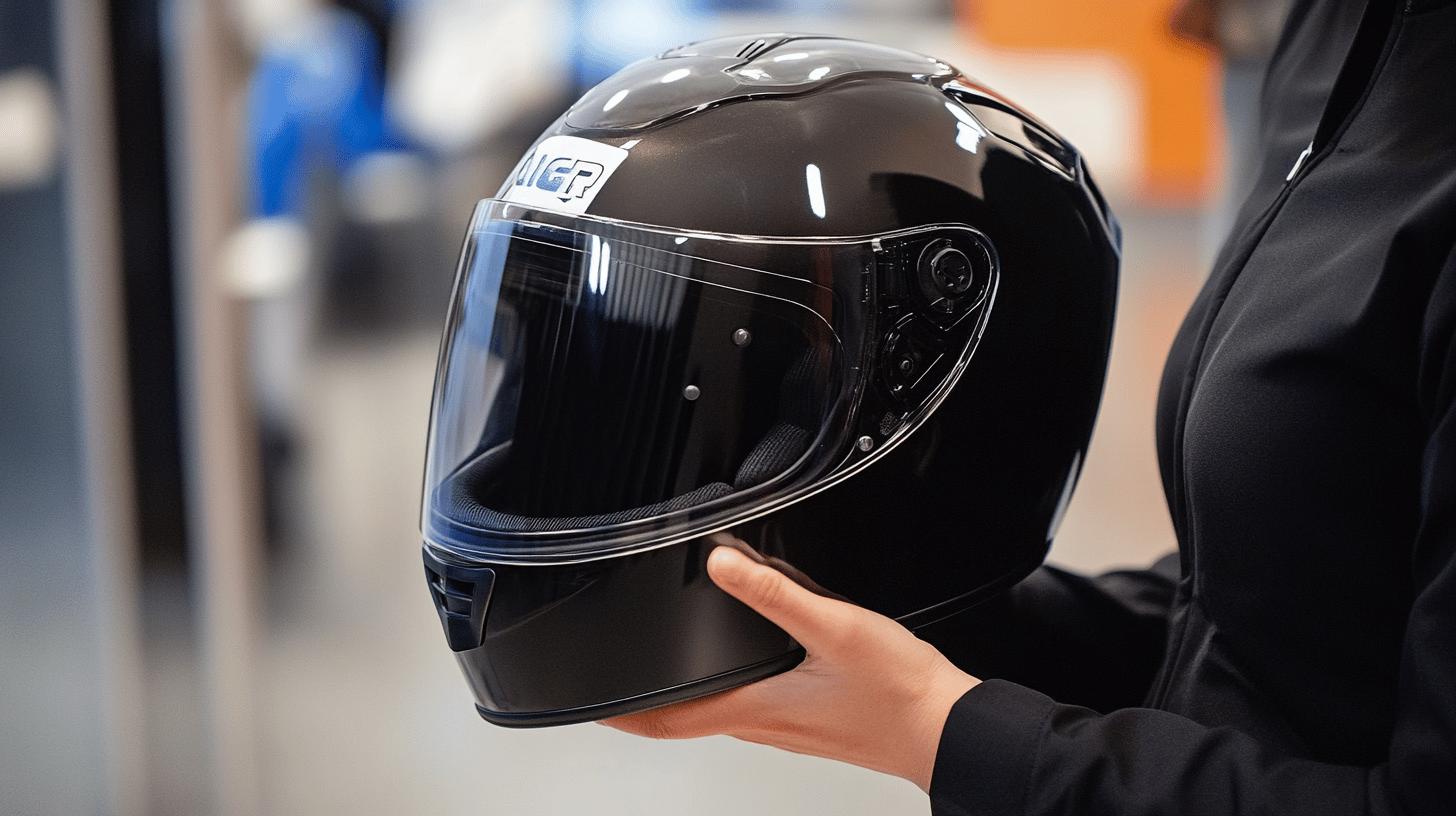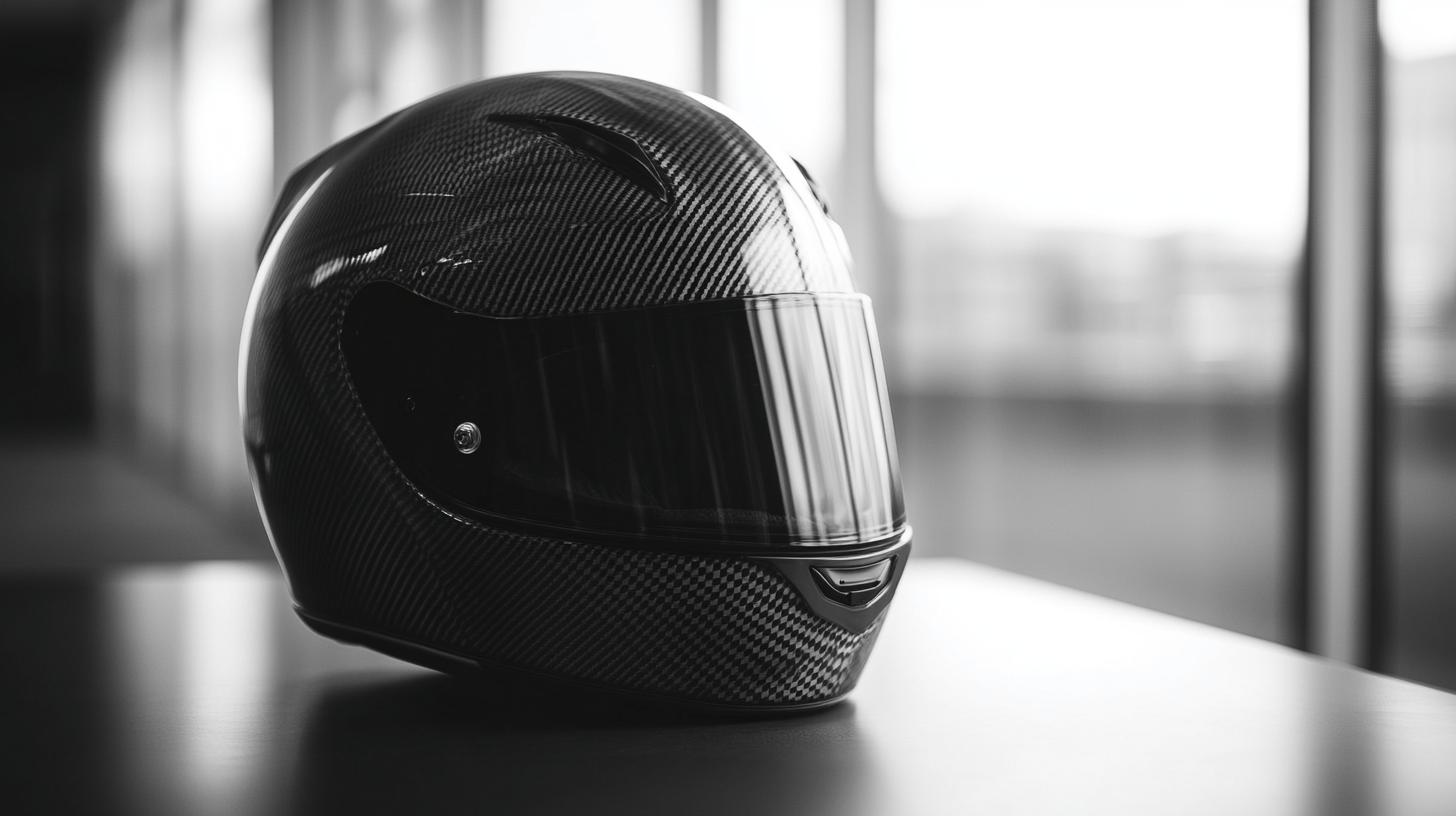Ever wondered what the most advanced motorcycle helmet looks like today? In an era where cutting-edge technology transforms our daily lives, helmets are no exception.
They now merge safety with high-tech features like built-in cameras, Bluetooth connectivity, and heads-up displays (HUD). Helmets such as the CrossHelmet X1 and Reevu HUD Helmet redefine what we expect from protective gear.
These remarkable innovations not only enhance your riding experience but also set new safety standards. Explore with us as we take a closer look at these revolutionary helmets, helping you make informed choices for your next ride.
Exploring the Most Advanced Motorcycle Helmets

What is the most advanced motorcycle helmet today? The CrossHelmet X1 and Reevu HUD Helmet are prime contenders due to their integration of cutting-edge technologies.
These helmets incorporate built-in cameras, Bluetooth connectivity, and heads-up displays (HUD), setting a new standard for rider safety and connectivity. Such features allow riders to maintain situational awareness, communicate seamlessly, and enjoy an enhanced riding experience.
The evolution of helmet technology has led to innovations that prioritize both protection and convenience, making these helmets indispensable for tech-savvy motorcyclists.
-
CrossHelmet X1: Offers a rear-view camera and HUD for enhanced visibility.
-
Reevu HUD Helmet: Integrates a rear-view mirror system to address limited rear visibility.
-
Forcite MK1S: Known for its well-rounded intelligent features.
-
Sena Stryker: Features Bluetooth and Mesh Intercom for superior audio quality.
-
Quin McQ: Offers crash detection and an SOS beacon, ideal for safety-conscious riders.
Innovation awards play a critical role in the development of advanced motorcycle helmets. These accolades recognize helmets that push the boundaries of safety, design, and functionality. Winning such awards not only elevates a helmet's reputation but also encourages manufacturers to continue innovating.
By setting benchmarks for excellence, these awards foster a competitive environment where the latest helmet models strive to incorporate the best in technology and design. This drives the continuous evolution of helmets, ultimately benefiting riders with more advanced and reliable gear.
Key Features of Advanced Motorcycle Helmets

What defines advanced helmet technology today? Precision in this context means helmets that integrate smart features like Bluetooth, HUD, and rear-view cameras. The evolution of helmet technology has transformed from basic head protection to sophisticated devices that enhance both safety and connectivity.
Modern innovations now focus on providing riders with comprehensive situational awareness and seamless communication capabilities. Helmets like the CrossHelmet X1 and Sena Stryker exemplify these advancements, offering features that meet the demands of today's tech-oriented riders.
-
Bluetooth Integration: Allows for hands-free communication and music streaming.
-
Heads-Up Display (HUD): Projects essential information, keeping the rider’s eyes on the road.
-
Rear-View Cameras: Provide a wide-angle view of surroundings, reducing blind spots.
-
Mesh Intercom Systems: Enable seamless communication with multiple riders.
-
Crash Detection Systems: Automatically alert emergency contacts in the event of an accident.
-
Emergency SOS Beacons: Enhance safety with immediate distress signals.
-
GPS Navigation: Offers turn-by-turn directions directly in the helmet.
-
Voice Command Features: Allow riders to control functions without removing hands from the handlebars.
These smart helmet features significantly enhance rider safety and convenience. Bluetooth and HUD technologies keep riders connected and informed without distraction. Rear-view cameras and mesh intercom systems improve situational awareness and group communication.
Safety features like crash detection and SOS beacons offer peace of mind, ensuring help is just a signal away. The integration of GPS and voice commands further streamlines the riding experience, allowing riders to focus on the journey while navigating efficiently. Together, these innovations redefine what it means to ride with confidence and connectivity.
Safety Standards and Certifications in Advanced Helmets

What ensures a motorcycle helmet is safe? DOT safety standards are the baseline, as all advanced helmets must comply with Federal Motor Vehicle Safety Standard (FMVSS) number 218. This certification guarantees that helmets have passed rigorous testing for impact protection, retention system effectiveness, and penetration resistance, ensuring a high level of safety for all riders.
ECE helmet certification, commonly found in advanced models, provides an additional layer of assurance. The Economic Commission for Europe (ECE) regulation 22.05 tests helmets under different conditions, including environmental testing and impact performance, making it a widely recognized international safety standard.
In addition to these certifications, advanced helmets often incorporate features that further enhance rider safety. Systems such as crash detection and emergency SOS beacons are becoming standard in top-tier helmets. Crash detection systems can automatically send alerts to emergency contacts in the event of an accident, providing timely assistance when it’s most needed.
Emergency SOS beacons, on the other hand, allow riders to send distress signals, ensuring help is just a signal away. These innovations not only elevate the safety profile of modern helmets but also offer peace of mind for riders, knowing their gear is equipped with the latest safety technologies.
Materials and Design of Advanced Motorcycle Helmets

What materials are most crucial for advanced motorcycle helmets? Carbon fiber stands out as a top choice due to its exceptional strength-to-weight ratio, providing a robust yet lightweight construction. Helmets like the Ruroc Atlas 4.0 Carbon utilize carbon fiber to ensure durability without compromising on comfort.
The reduction in weight is significant for long rides, as it decreases neck strain and enhances maneuverability. This makes carbon fiber an ideal material for riders looking for high-performance gear.
| Material | Benefits |
|---|---|
| Carbon Fiber | Lightweight, high strength, durable |
| Fiberglass | Good impact resistance, affordable |
| Polycarbonate | Cost-effective, decent impact protection |
| Kevlar | High tensile strength, excellent safety |
| ABS Plastic | Lightweight, economical, good flexibility |
How does design impact the performance of advanced helmets? Aerodynamics plays a pivotal role in helmet design, influencing both stability and rider comfort. An aerodynamic design reduces wind resistance, allowing for smoother rides at high speeds. This not only aids in fuel efficiency but also minimizes helmet lift and noise, contributing to a more enjoyable riding experience.
Helmets like the Ruroc Atlas 4.0 Carbon are crafted with these principles in mind, ensuring that the helmet cuts through air efficiently, providing optimal performance for tech-savvy riders who demand both safety and sleek design.
Enhancing Rider Experience with Smart Features

What makes a motorcycle helmet comfortable for riders? A comfortable helmet is one that fits snugly without causing pressure points or discomfort during long rides. Advanced helmets prioritize this comfort through adjustable fit systems and ergonomic designs that conform to the rider's head shape.
This ensures that the helmet remains secure yet comfortable, reducing fatigue and distraction. Helmets with customizable padding and ventilation systems further enhance comfort, allowing riders to adjust the helmet to their specific preferences and ride conditions.
-
Adjustable Fit Systems: Enable a tailored fit for various head shapes and sizes.
-
Ergonomic Designs: Reduce pressure points and enhance long-ride comfort.
-
Communication Systems: Offer seamless connectivity for calls and music.
-
Integrated Speakers and Microphones: Enhance audio quality without external devices.
-
Noise Reduction Technologies: Minimize wind and road noise for clearer communication.
-
Ventilation Systems: Improve airflow, keeping riders cool and comfortable.
How do these smart features improve safety and convenience? Communication systems, such as those found in the Sena Stryker, provide seamless connectivity, allowing riders to stay in touch with fellow riders or take calls safely.
Integrated speakers and microphones ensure clear audio without the need for additional gadgets, while noise reduction technologies enhance communication clarity by minimizing external sounds. Ventilation systems keep riders cool, preventing overheating and maintaining focus on the road.
Additionally, features like the Quin McQ's crash detection system and SOS beacon offer added safety, ensuring that riders have immediate assistance in emergencies. Together, these smart features not only enhance the riding experience but also contribute to safer and more enjoyable journeys.
Choosing the Right Advanced Helmet for Your Needs

Selecting an advanced motorcycle helmet requires attention to several critical factors. Fit is paramount; a helmet should be snug without causing discomfort, ensuring it stays in place during rides. Safety certifications such as DOT and ECE provide assurance that the helmet meets rigorous standards.
Smart features, like Bluetooth connectivity and rear-view cameras, enhance the riding experience by improving situational awareness and communication. Models like the Forcite MK1S and Quin McQ offer advanced technologies and have garnered positive reviews for their performance and reliability.
-
Assess Your Riding Style: Consider whether you need a full-face, modular, or open-face helmet based on your typical riding conditions and preferences.
-
Check Safety Certifications: Ensure the helmet meets DOT, ECE, or other relevant safety standards to guarantee protection.
-
Evaluate Smart Features: Determine which smart functionalities, such as GPS, HUD, or communication systems, are essential for your riding needs.
-
Try for Fit and Comfort: Test the helmet for a proper fit, ensuring it’s secure but comfortable, with no pressure points.
-
Read User Reviews: Look for feedback on models like the Forcite MK1S and Quin McQ to understand real-world performance and satisfaction.
Customization options in advanced helmets allow riders to express personal style while maintaining functionality. Many helmets offer interchangeable visors, padding, and graphics to suit individual tastes.
Reading user reviews provides additional insights into comfort, durability, and performance, helping riders make informed decisions. Understanding these factors ensures that the helmet not only meets safety and technological needs but also aligns with personal preferences, leading to a more satisfying riding experience.
Final Words
Exploring the most advanced motorcycle helmets reveals a blend of cutting-edge technology and design innovation. These helmets, featuring built-in cameras, Bluetooth, and HUDs, redefine the rider's experience.
Innovation awards highlight significant advancements, influencing future development. Understanding key features, safety certifications, and material design guides riders in selecting helmets that enhance safety and connectivity.
For those questioning, "what is the most advanced motorcycle helmet?" the answer lies in these modern marvels, promising a safer and more connected ride.
FAQ
What is the most advanced motorcycle helmet with Bluetooth?
The most advanced motorcycle helmet with Bluetooth is the CrossHelmet X1, featuring integrated Bluetooth for communication and a heads-up display for enhanced visibility and rider connectivity.
What is a smart motorcycle helmet?
A smart motorcycle helmet combines traditional protective gear with modern technology, including Bluetooth connectivity, heads-up displays, and sometimes rear-view cameras to enhance safety and communication for riders.
What is the CrossHelmet X1 and its price?
The CrossHelmet X1 is an advanced helmet with Bluetooth, a rear-view camera, and a heads-up display. Prices can vary, but it typically retails around $1,800, depending on the retailer and region.
What technology is found in smart motorcycle helmets?
Smart motorcycle helmets often include Bluetooth integration, heads-up displays, and rear-view cameras. These features improve safety by enhancing rider awareness and connectivity while on the road.
What is the most advanced helmet display?
The most advanced helmet display is found in the CrossHelmet X1, offering a heads-up display that shows navigation, weather, and other pertinent information directly in the rider’s line of sight.
Who makes the highest quality motorcycle helmets?
Manufacturers like Shoei, Arai, and AGV are renowned for high-quality motorcycle helmets, known for their safety certification, durability, and innovative features that enhance rider safety and comfort.
What is the most protective helmet in the world?
The most protective helmet is often considered one that meets multiple safety standards such as DOT and ECE and includes features like impact absorption materials and advanced safety technology enhancements.
What new technology is being used in helmets?
Innovations in helmets include Bluetooth communication, heads-up displays, rear-view cameras, crash detection systems, and SOS beacons, enhancing rider safety and connectivity in modern helmet designs.

Mark Anderson is a trusted expert with over 25 years of riding experience. At 56, his deep knowledge of long-distance touring and participation in major motorcycle rallies makes him a reliable source for gear recommendations on ProtectiveGearz. Mark’s decades of firsthand experience ensure his advice is authoritative and valuable to riders seeking expert guidance.



